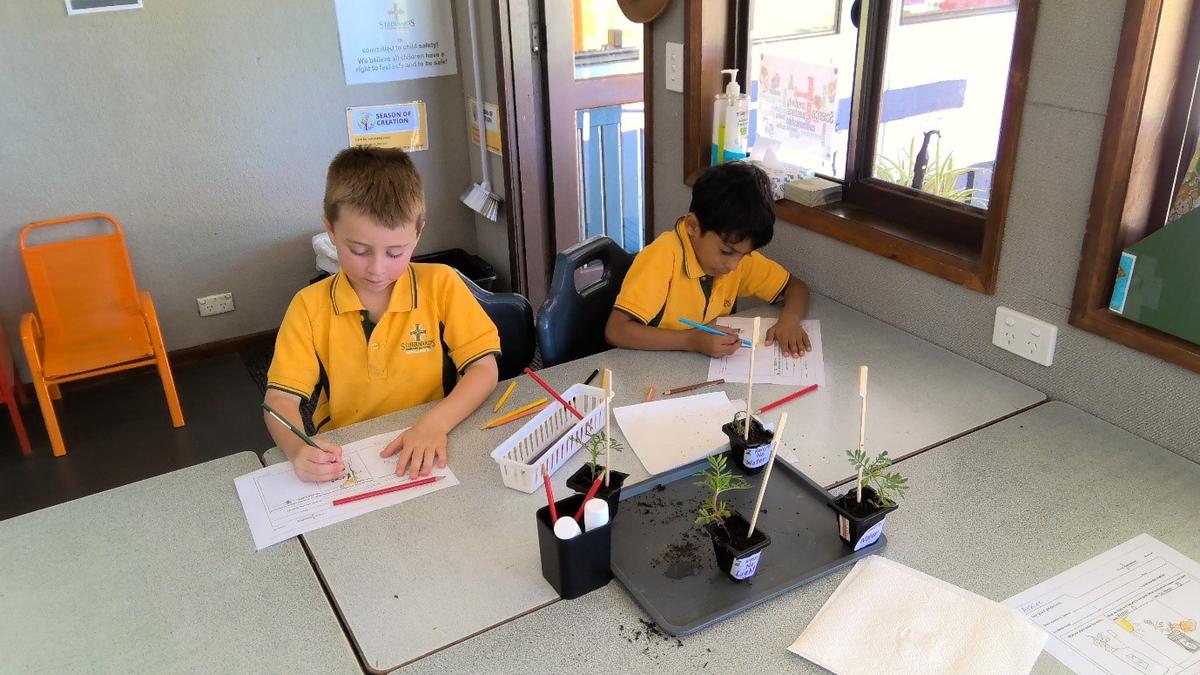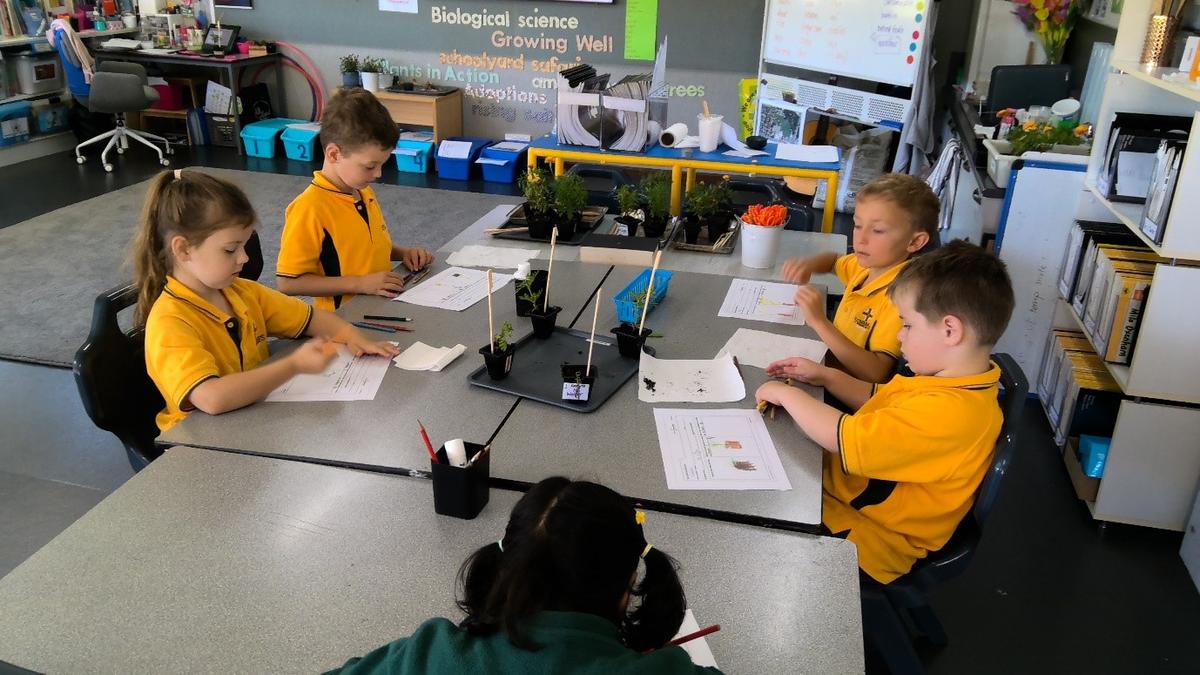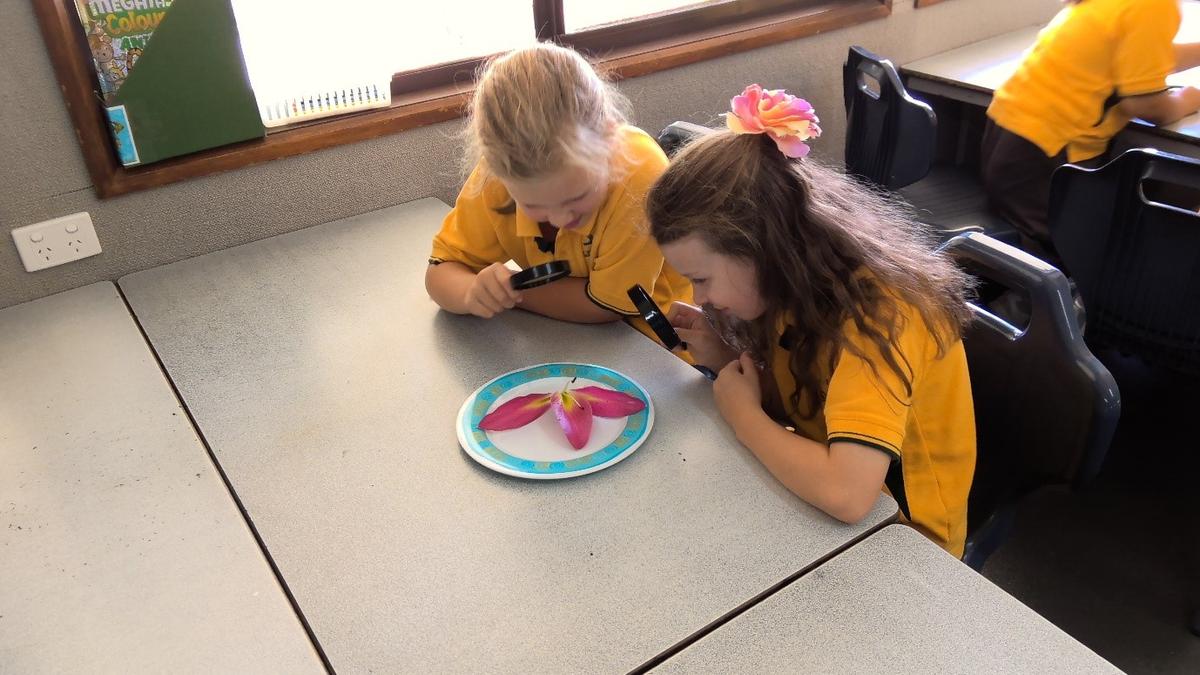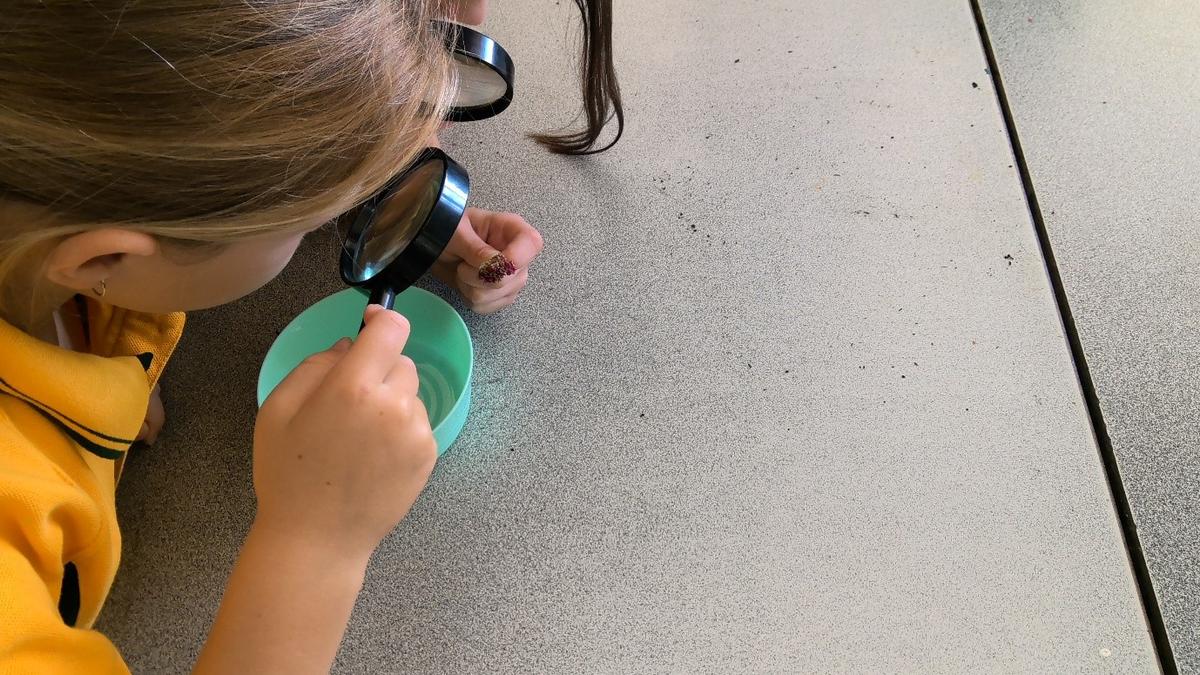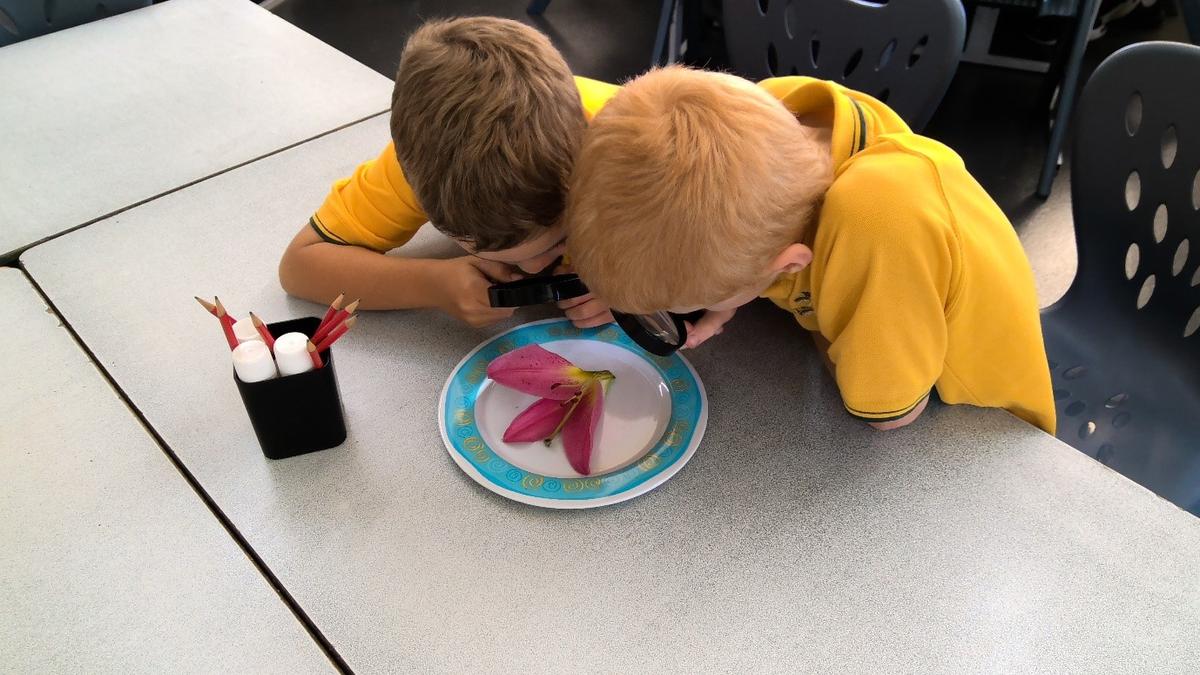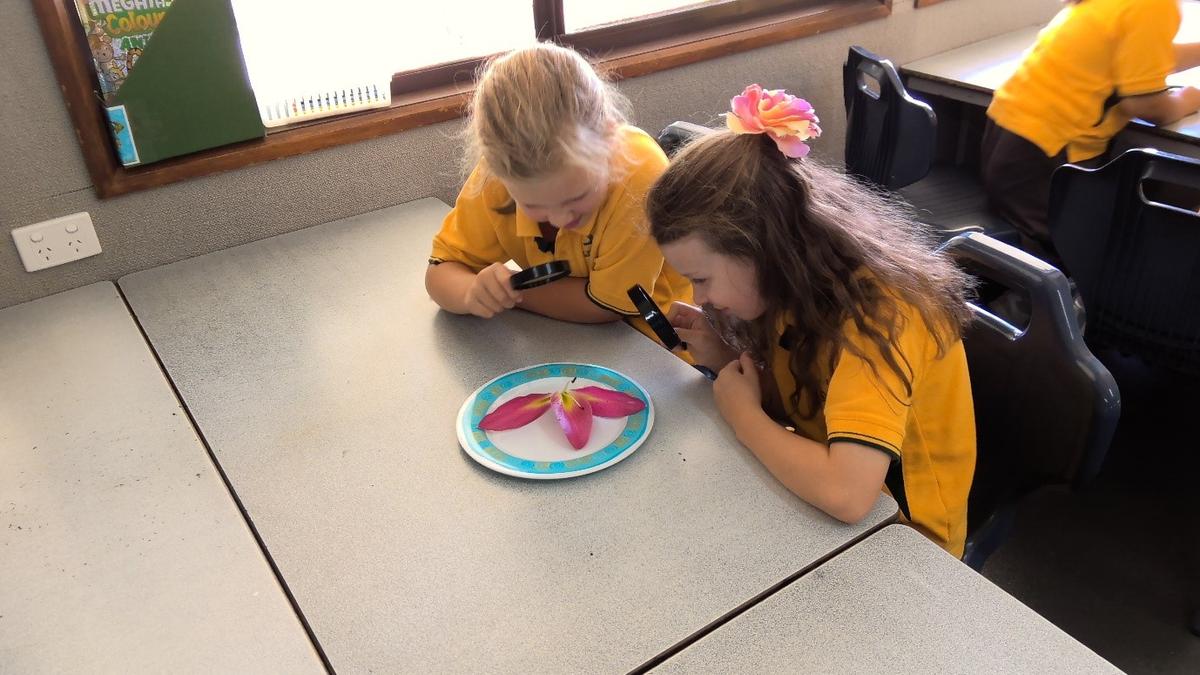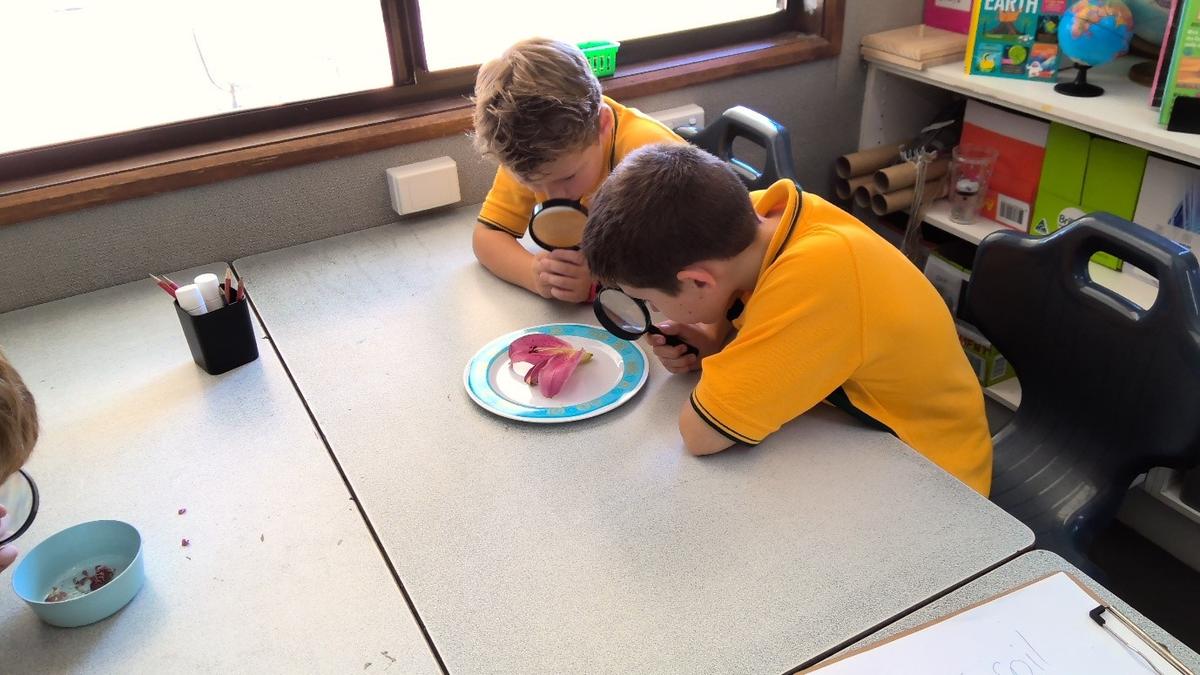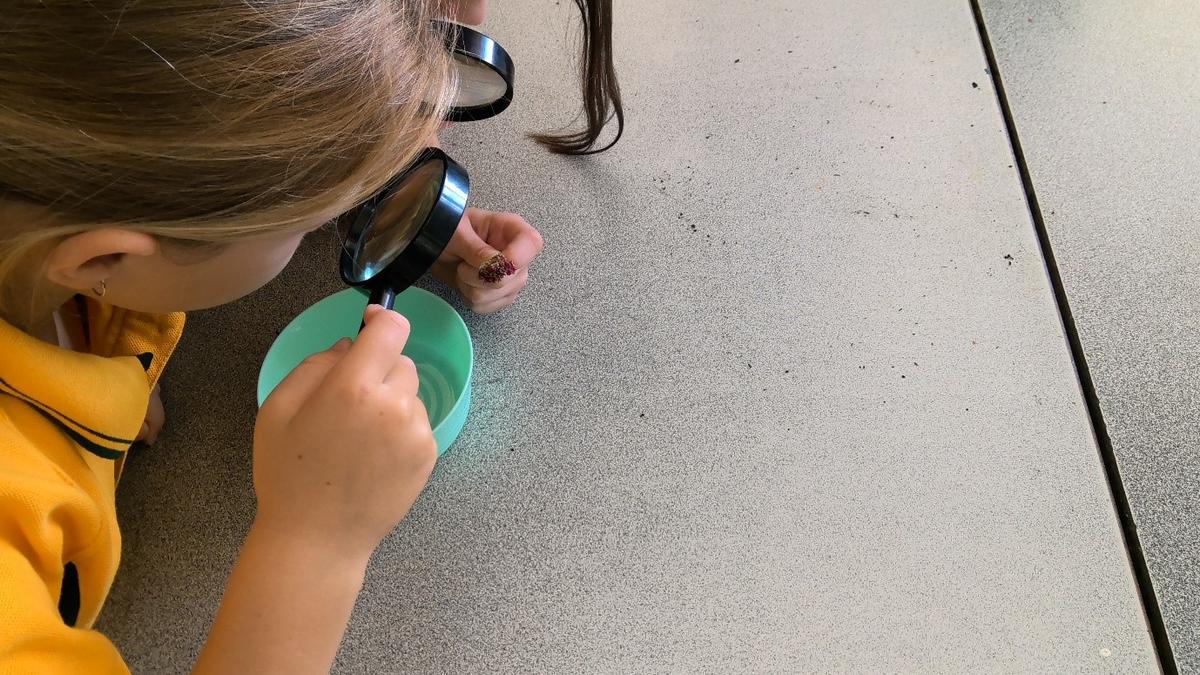Science
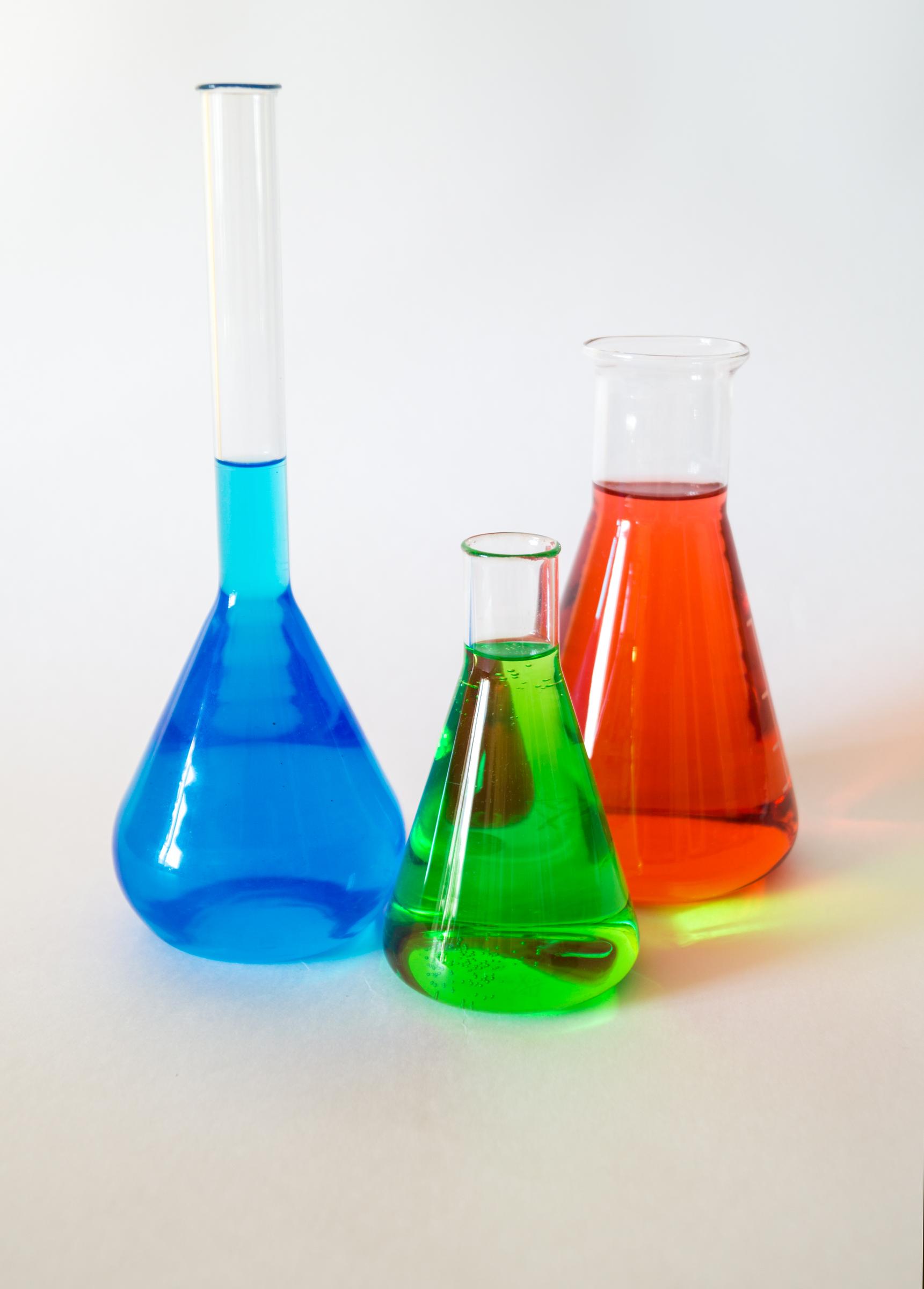
Foundation
Over the past couple of weeks, Foundation students have been exploring how animals, including humans, need air, food and water, and in particular why we need food and water. This has included discussions regarding what happens to our bodies when we drink water, and what would happen if we don’t get enough water.
Grade 1
Grade one students have been looking at what plants need to stay alive and healthy. They have conducted an investigation where we used marigold plants to observe what happens to plants if they don’t get enough water or light.
Students had to work in teams with four labelled plants – water, no water, light and no light.
Plants were then kept in these conditions and after one week students measured and recorded the growth of their plant. After two weeks, all grade one students had come to the same conclusion – plants DO need water and light to stay alive and grow.
Grade 2
Grade 2 students have continued on their ‘School Yard Safari’ and have been looking more closely at some of the mini beasts that we might find in our school yard or home gardens. We have investigated earthworms and snails, although it has been quite hard to find these due to the dry weather.
Did you know that earthworms have small hairs along their bodies which help them to move through and over surfaces?
Did you know that snails can re-grow their shell if it gets damaged?
A common belief of many of the children was that if a snail lost its shell it became a slug. This of course is untrue, as snails and slugs are different species!
Grade 3
Grade three students have begun an investigation where they will describe how the orientation of a planted seed affects the growth of the root and shoot when the seed germinates.
Students have each lined a plastic cup with paper towel, and inserted more paper towel to absorb water.
Between the cup and paper towel, they have placed a broad bean seed, some with the ‘scar’ facing up, some down and some sideways.
The seeds have begun to sprout and this week we will observe if it made any difference which way the seed was positioned, and measure how much they have grown.
Growing the seeds in this way helps the children to see how the seed actually germinates after it has been activated by water.
We have also been looking at what is inside a flower and this week will label flower parts in our science books.
Try cutting the fruit of a rose bush (the rose hip) in half to see where the new seeds have been produced.
Thank you to Hello Petals Florist in Reid Street for the donation of flowers for this investigation – the liliums were perfect!
Grade 4
Grade four students are investigating the best conditions to germinate and grow eucalypt trees.
Each table team has a control which has ideal conditions, one pot with poor quality soil, one pot with poor light conditions and one pot which has seeds that have been exposed to extreme heat as if they had been in a bushfire.
Over the coming weeks we will look further into how eucalypts germinate, their flowers and fruit (gumnuts) and provide students with hands-on, shared experiences of the life cycles of eucalypts and European honeybees and the relationship between them.
Grade 5.
Grade 5 students continue to explore how living things must make adaptions to grow, survive and thrive.
So far, we have looked in detail at structural adaptations These are adaptions living things make to their physical being in order to survive and include Mimicry ( Mimicry is usually a way to avoid being eaten and takes many forms. The best known examples of mimicry are when harmless animals (non-venomous or non-toxic) resemble venomous or toxic animals.
Camouflage (This is when an animal's colours or patterns help it blend in with its surroundings, like a stick insect that looks like a twig or a tiger’s stripes that hide it in tall grass).
Crypsis (is another way of avoiding predation. Crypsis is when animals resemble their backgrounds permanently, making it more difficult to see them.)
We have also looked at Behavioural adaptions – where animals change their behaviours in order to survive and thrive.
We are going to look at physiological adaptions more closely this week to develop a better understandings of this - Physiological adaptations are special changes inside an animal’s body that help it survive in its environment.
These changes happen naturally and help animals live, grow, and stay healthy.
Grade 6
Grade 6 students are beginning to investigate how the quality of water, and in particular how salt in our water supply can affect the growth and health of plants, and how this may impact farming in Australia.
This week we are planning the investigation in response to a letter from a ‘concerned life-styler who is having trouble in their goal to live sustainably by growing all their own food and resources.
Students will have opportunity for hands-on, shared experiences of how different concentrations of salt water affect living things by work in teams to plan and conduct a fair test of how different concentrations of salt water affect the growth and health of their plants and observe and record the results of their investigation.
